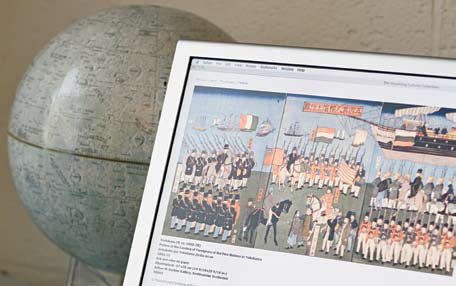
June 2005–May 2006
Using new technologies, Visualizing Cultures weds images and commentary to illuminate social and cultural history in innovative ways. A narrative “Core Exhibit” not only gives the historical significance of the images, but also addresses issues such as genre and medium. Each unit comes with a comprehensive curriculum and carefully annotated digital archive of images from public and private sources.
Through Visualizing Cultures, we are teaching students to create visual narratives on Indian culture, the Mafia, early photography, the Olympics, and so forth. Also, as part of our traveling exhibit of Black Ships and Samurai, we have established “teaching sites” for junior and senior high school teachers and students at the National Archives in Washington, D.C.; Boulder, Colorado; Tempe, Arizona; Honolulu, Hawaii; and San Francisco, California. The National Endowment for Humanities has also selected the Black Ships and Samurai site as one of the best online resources for education in the humanities.
Visualizing Cultures is a gateway to seeing history through images that once had wide circulation among peoples of different times and places. We do historical research this way as scholars to better understand how people saw themselves; how they saw others, including foreigners and enemies; and how, in turn, others saw them.
As a result of iCampus support, the Visualizing Cultures Image Database was developed and now features five online units with a federated search tool for easy access to the images collection in the Arthur M. Sackler Gallery, Smithsonian Institution, in Washington, D.C.; the Museum of Fine Arts, Boston; and the Hiroshima Peace Memorial Museum in Japan.
Investigators: Prof. Shigeru Miyagawa of Linguistics and of Foreign Languages and Literatures; Prof. John Dower of History; Jeff Merriman
